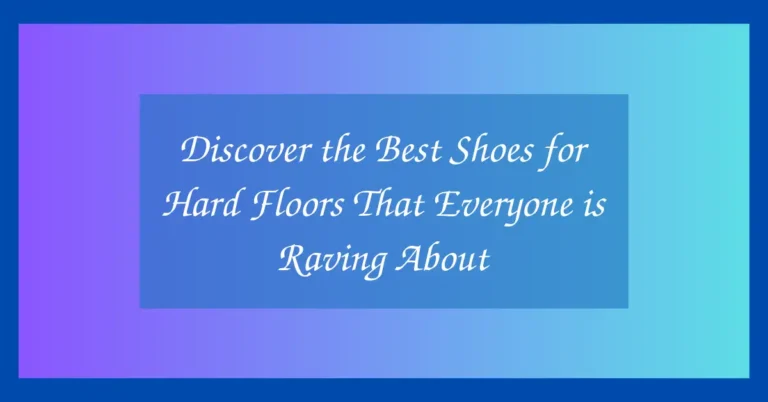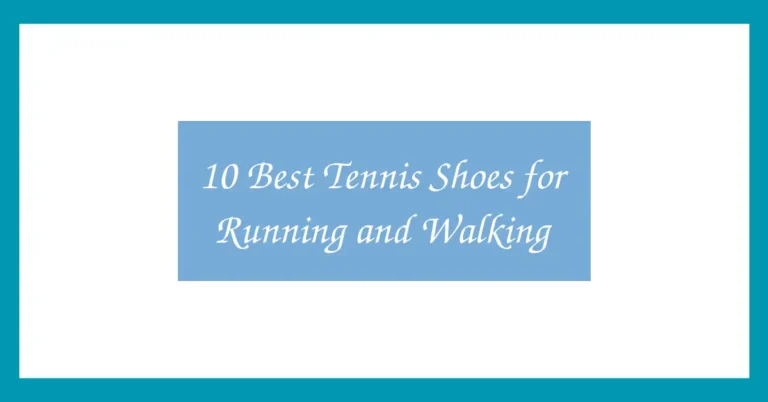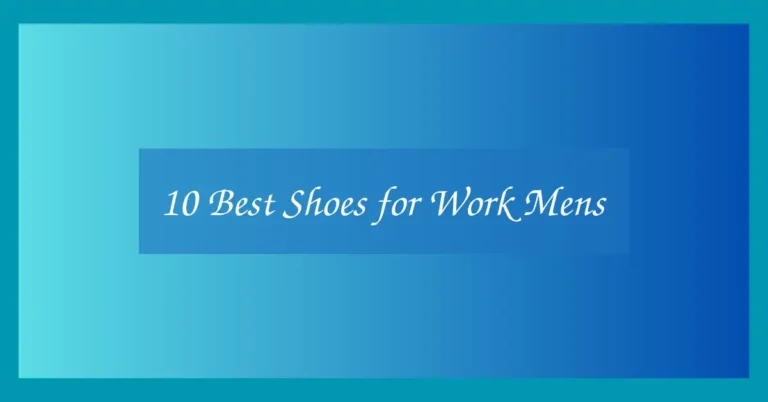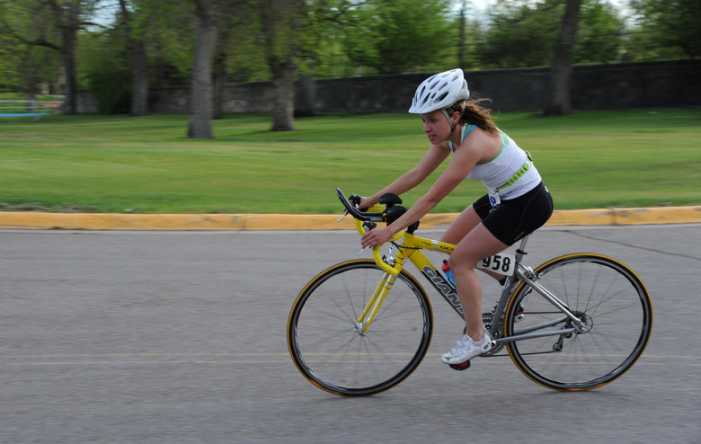The 10 Best Shoes for Forefoot Strikers: You Need Today
Forefoot striking is a running style where the runner lands on the ball of the foot rather than the heel or midfoot. This technique is favored by many elite athletes for its efficiency and speed, but it also requires shoes that support this unique gait. The best shoes for forefoot strikers are designed to offer cushioning at the front, flexibility, and responsiveness to enhance performance while minimizing injury risk.
In this guide, we’ve handpicked top-performing running shoes that cater specifically to forefoot strikers. These shoes have been tested for comfort, durability, support, and design ensuring they align with the needs of runners who prefer a forefoot strike. Whether you’re racing, training, or transitioning into this running style, our list will help you find your perfect pair.
Top 10 Best Shoes for Forefoot Strikers Reviewed
1. Nike ZoomX Vaporfly NEXT% 2
The Nike ZoomX Vaporfly NEXT% 2 is a high-performance racing shoe built for elite runners who use a forefoot strike. Its energy return and lightweight design make it a favorite for marathons and short-distance races alike. The full-length carbon fiber plate offers propulsion and helps maintain a strong toe-off, which is crucial for forefoot strikers.
ZoomX foam in the midsole delivers exceptional responsiveness while reducing muscle fatigue. The upper is made from a breathable engineered mesh that provides secure lockdown without sacrificing airflow. The asymmetrical lacing system also minimizes pressure on the top of the foot for a more comfortable fit.
Its curved sole geometry encourages a forward-leaning posture, enhancing stride efficiency. While not designed for daily training, the Vaporfly NEXT% 2 excels on race day with its superb speed and lightweight feel.
Durability may not be its strongest suit, but for those chasing personal bests, this shoe delivers unmatched performance. It’s ideal for competitive runners seeking a cutting-edge racing shoe that supports their forefoot strike mechanics.
Pros
- Exceptional energy return
- Full-length carbon fiber plate
- Lightweight and breathable
Cons
- High cost for occasional use
- Durability concerns with outsole
2. Altra Escalante 3
The Altra Escalante 3 is a zero-drop running shoe that encourages a natural foot strike, making it a solid choice for forefoot runners. It features Altra’s signature FootShape toe box, allowing your toes to splay and engage naturally with every stride. This promotes balance and helps with a smoother forefoot landing.
Equipped with Altra’s EGO™ midsole, the Escalante 3 offers a balance between responsiveness and cushioning. The ride is flexible and springy, catering to runners who value ground feel without compromising comfort. The knit upper adapts to your foot, offering a snug yet breathable fit.
The redesigned outsole provides improved durability and grip over previous versions. Despite being lightweight, the shoe offers sufficient structure to support forefoot runners during daily runs or even long-distance efforts.
It’s a versatile choice for runners transitioning to minimalist footwear or those who already favor zero-drop designs. The Escalante 3 is an excellent pick for forefoot strikers who want a natural, unrestricted ride.
Pros
- Zero-drop promotes natural gait
- Flexible and lightweight
- Spacious toe box
3. HOKA Mach 5
The HOKA Mach 5 strikes a perfect balance between speed and comfort, tailored for runners who land on their forefoot. With a PROFLY+ midsole, the Mach 5 provides a soft landing and energetic toe-off, which suits forefoot mechanics well. Its low-profile cushioning and lightweight construction support a more natural foot movement.
The Mach 5’s jacquard mesh upper offers breathability and a snug fit without hot spots. It wraps around the foot gently, maintaining comfort over long distances. The gusseted tongue design adds to the secure feel, especially for runners with a dynamic stride pattern.
One standout feature is the rocker geometry, which smoothly transitions from landing to push-off. For forefoot strikers, this design enhances propulsion and keeps the gait fluid. The rubberized EVA outsole delivers decent traction and keeps the overall weight of the shoe down.
Whether you’re training for speed or aiming for a lightweight daily trainer, the Mach 5 offers the kind of ride forefoot strikers can count on for performance and comfort.
Pros
- Responsive and cushioned ride
- Lightweight and breathable
- Efficient rocker design
Cons
- May lack support for heavy runners
- Grip not ideal in wet conditions
4. Saucony Endorphin Speed 3
The Saucony Endorphin Speed 3 is a high-performance trainer that delivers speed and versatility for forefoot strikers. It features a nylon plate embedded in a responsive PWRRUN PB midsole, which provides a bouncy and snappy ride. This helps forefoot runners maintain pace while conserving energy during longer efforts.
The S-curve winged plate supports the forefoot while allowing natural foot flexion. It contributes to a forward-rolling sensation that promotes faster transitions. This makes the Endorphin Speed 3 suitable for tempo runs, intervals, and even marathons.
FormFit technology wraps the foot for a secure and customized fit, enhancing stability. The mesh upper is lightweight and well-ventilated, preventing overheating during intense runs. Traction is reliable across a variety of surfaces thanks to the durable rubber outsole.
This shoe is a great alternative to carbon-plated racers, offering similar propulsion without the stiffness. It’s an excellent all-around choice for forefoot strikers who want one shoe that can handle it all.
Pros
- Responsive nylon plate for propulsion
- Lightweight and breathable upper
- Versatile for various training types
Cons
- Slightly narrow midfoot fit
- Midsole may feel firm to some runners
5. New Balance FuelCell Rebel v3
The New Balance FuelCell Rebel v3 is an energetic daily trainer with a design that complements forefoot striking. It features a high-rebound FuelCell midsole that encourages a quick and responsive toe-off. The geometry naturally supports a forefoot strike, making each transition feel smooth and powerful.
Its engineered mesh upper provides ventilation and a sock-like fit. Despite being feather-light, the shoe offers enough structure to guide your foot through its natural motion. The forefoot area feels roomy, giving your toes space to spread and absorb impact efficiently.
The outsole rubber has been strategically placed to support traction where forefoot strikers need it most. This enhances durability and grip, especially on roads. A flared heel and lateral midsole support provide additional stability without interfering with a natural gait.
Ideal for fast training days or short races, the Rebel v3 delivers a bouncy, fast ride for forefoot-focused runners. It’s one of the most fun, lightweight options in its class.
Pros
- Highly responsive FuelCell foam
- Lightweight and breathable
- Great ground contact for forefoot strikers
Cons
- Less cushioning for long-distance runs
- Minimal heel support
6. ASICS Metaspeed Sky+
The ASICS Metaspeed Sky+ is crafted for runners who lengthen their stride and push off from the forefoot. It uses ASICS’ FF Blast Turbo foam, which is ultra-light and springy, enhancing the explosive power of every toe-off. The carbon plate is positioned to maximize propulsion without compromising comfort or efficiency.
This shoe’s curved midsole geometry aligns well with a forefoot striker’s natural gait. The engineered mesh upper is ultra-breathable and offers a race-day fit with minimal overlays. Despite its featherlight build, the Sky+ still offers a solid platform and support where it’s needed most.
Outsole durability has been improved with ASICSGrip rubber in high-impact areas, supporting better grip even on wet surfaces. The secure lockdown around the midfoot and heel prevents slippage during fast runs, which is especially useful for competitive athletes.
The Metaspeed Sky+ is a race-optimized shoe built to go fast. It’s best for advanced runners who understand their stride and want an elite shoe that aligns with their aggressive forefoot strike pattern.
Pros
- FF Blast Turbo foam provides maximum bounce
- Ideal geometry for stride-based runners
- Grippy and race-ready outsole
Cons
- Best suited for race days only
- Premium pricing
7. Topo Athletic ST-4
The Topo Athletic ST-4 is a minimalist trainer that appeals to forefoot strikers who favor ground feel and natural movement. With a 0mm drop and low stack height, it encourages active engagement of the forefoot and calves. The ST-4 is flexible, lightweight, and designed to support natural biomechanics.
The mesh upper is soft and accommodates a variety of foot shapes, thanks to Topo’s anatomical last and wide toe box. This allows toes to splay during toe-off, enhancing balance and control. Internal reinforcement in the heel and midfoot keeps the foot secure despite the shoe’s light weight.
Forefoot strikers will appreciate the direct feedback they get from the road. The outsole uses rubber in high-wear areas to offer durability without compromising on flexibility. It’s a great shoe for gym workouts, short runs, or even all-day wear.
While not ideal for long-distance training, the ST-4 is a solid pick for minimalist runners or those looking to strengthen their feet and improve proprioception.
Pros
- Minimalist design supports natural gait
- Lightweight and breathable
- Wide toe box for forefoot splay
Cons
- Limited cushioning for longer runs
- Not ideal for heavy runners
8. Brooks Hyperion Tempo
The Brooks Hyperion Tempo is designed for speed workouts and race-paced runs, making it well-suited to forefoot strikers. The nitrogen-infused DNA FLASH midsole provides a responsive and stable ride, ideal for quick foot turnover. This low-profile shoe keeps you close to the ground for better control and efficiency.
Its stretch woven upper conforms to the foot and provides structure without excess weight. The shoe is well-ventilated and drains moisture effectively during sweaty workouts. With a relatively low drop and moderate cushioning, it promotes a forward-leaning gait that benefits forefoot runners.
The outsole is strategically designed to enhance grip and durability while keeping weight down. It excels on roads and well-maintained tracks, giving consistent performance in varied tempo runs. The heel cup and arch support ensure a locked-in feel without over-correction.
This is a great lightweight trainer for runners looking to build speed without compromising on support. It pairs best with runners who already have a strong forefoot strike and seek efficiency in their stride.
Pros
- Responsive DNA FLASH foam
- Lightweight, breathable upper
- Great for tempo and speed runs
Cons
- Less cushioned for long distances
- Not ideal for slower-paced recovery runs
9. Inov-8 Bare-XF 210 V3
The Inov-8 Bare-XF 210 V3 is a barefoot-style training shoe that suits forefoot strikers looking for minimal interference and maximum ground connection. It has a zero-drop platform and ultra-thin midsole, designed to mimic barefoot running mechanics. The flexibility and foot-hugging fit promote a fully natural stride.
The reinforced mesh upper is built to withstand intense training sessions, including CrossFit and lifting. A rubber toe cap and medial rope grip add durability for varied training environments. This makes the Bare-XF 210 V3 one of the most durable minimalist shoes on the market.
The outsole uses sticky rubber for enhanced traction, giving users excellent grip on indoor and outdoor surfaces. The thin sole also enhances proprioception, which is beneficial for agility drills and quick footwork. However, the shoe offers virtually no cushioning, so it’s not suited for long-distance road running.
This is a niche choice for experienced minimalist runners or those working on form correction and foot strength. It’s a top pick for training and light running for forefoot athletes who want a barefoot feel.
Pros
- Zero-drop for natural stride
- Highly durable and grippy
- Superb ground feedback
Cons
- No cushioning at all
- Not suitable for long-distance running
10. On Cloudflow 4
The On Cloudflow 4 combines Swiss engineering with performance design tailored for runners who prefer a forefoot strike. It uses Helion™ superfoam and a Speedboard® plate to deliver smooth transitions and springy takeoffs. The firm yet flexible design makes it perfect for fast-paced training and racing.
The CloudTec® cushioning pods compress on impact and release energy on toe-off, matching the propulsion needs of forefoot strikers. The upper features a reengineered knit for better breathability and improved lockdown across the midfoot. The updated outsole configuration improves traction without adding bulk.
Thanks to its relatively low drop and responsive ride, the Cloudflow 4 encourages a natural forward motion. It delivers just enough cushion to protect without dulling the ground feel. Lightweight and agile, it’s great for tempo runs, intervals, and half marathons.
The Cloudflow 4 offers a sleek and fast experience for runners who appreciate efficiency and comfort. It’s a performance shoe that forefoot strikers can rely on across varied distances.
Pros
- Springy and responsive ride
- Breathable, secure upper
- Great for race-pace efforts
Cons
- Less cushion for longer races
- Can feel firm for some runners
| Product Name | Weight | Drop | Best Use | Key Feature |
|---|---|---|---|---|
| Nike ZoomX Vaporfly NEXT% 2 | ~6.9 oz | 8 mm | Racing | Full-length carbon plate |
| Altra Escalante 3 | ~8.3 oz | 0 mm | Daily training | FootShape toe box |
| HOKA Mach 5 | ~7.8 oz | 5 mm | Tempo runs | PROFLY+ midsole |
| Saucony Endorphin Speed 3 | ~8.1 oz | 8 mm | Versatile training | Nylon winged plate |
| New Balance FuelCell Rebel v3 | ~7.4 oz | 6 mm | Speed workouts | FuelCell foam |
| ASICS Metaspeed Sky+ | ~7.2 oz | 5 mm | Racing | FF Blast Turbo foam |
| Topo Athletic ST-4 | ~6.9 oz | 0 mm | Minimalist training | Wide toe box |
| Brooks Hyperion Tempo | ~7.3 oz | 8 mm | Speed sessions | DNA FLASH midsole |
| Inov-8 Bare-XF 210 V3 | ~7.4 oz | 0 mm | Barefoot training | Sticky rubber outsole |
| On Cloudflow 4 | ~8.1 oz | 6 mm | Fast training | CloudTec® cushioning |
Best Shoes for Forefoot Strikers: Buying Guide
What Makes a Shoe Ideal for Forefoot Strikers?
Forefoot strikers need shoes that cater to their unique landing mechanics. These runners typically benefit from lower drop shoes with responsive cushioning in the forefoot. A flexible forefoot, minimal heel cushioning, and lightweight construction help promote a smoother transition and reduce strain on the calves and Achilles.
Midsole Cushioning and Responsiveness
The best forefoot striking shoes offer responsive midsoles that return energy with each step. Materials like ZoomX, FuelCell, and FF Blast Turbo are engineered to compress and rebound efficiently. This reduces fatigue and enhances speed, especially during long runs or races.
Drop and Stack Height
A low heel-to-toe drop (typically 0-6 mm) is favorable for forefoot runners because it supports a more natural landing. High stack heights may still work as long as the forefoot is well-cushioned and doesn’t inhibit ground feel. Always consider your stride style and injury history when choosing drop height.
Forefoot Flexibility
Flexible forefoot areas allow for better propulsion and smoother toe-offs. Look for shoes with articulated grooves, mesh uppers, or softer foams that don’t resist your foot’s natural movement. Stiff forefoot areas may hinder performance and lead to discomfort over time.
Fit and Toe Box Shape
Forefoot strikers often benefit from wider toe boxes that let the toes splay during push-off. A snug midfoot and secure heel are essential for stability. Brands like Altra and Topo focus on anatomical shapes that accommodate natural foot movement and improve comfort.
Durability and Surface Compatibility
Durability matters, especially in high-impact forefoot zones. Look for reinforced outsoles or rubber coverage in the toe area. Consider where you’ll be running road shoes differ in grip and wear compared to trail or gym options. A durable outsole helps extend the life of your investment.
FAQ
What is a forefoot strike?
A forefoot strike is a running technique where the front part of your foot specifically the ball lands first before the heel. This contrasts with a heel strike, where the heel touches down first. Forefoot striking is common among sprinters and competitive runners due to its speed and efficiency advantages.
Are zero-drop shoes better for forefoot strikers?
Zero-drop shoes can be beneficial for forefoot strikers because they promote a more natural running posture and encourage mid to forefoot landing. However, not all runners will adapt easily. Transitioning to zero-drop footwear should be gradual to avoid injuries like Achilles tendonitis or calf strain.
How do I transition to forefoot striking safely?
To transition, begin by incorporating short runs focusing on form landing gently on the ball of your foot and increasing cadence. Strengthen your calves and feet through exercises. Gradually increase mileage and consider using transition-friendly shoes that offer moderate drop and support.
Can forefoot striking reduce injury risk?
Forefoot striking may reduce impact-related injuries linked to heel striking, such as stress fractures or knee pain. However, it can increase load on the calves and Achilles, potentially causing other issues. The key is proper form, gradual adaptation, and supportive footwear tailored to your needs.
Are racing shoes good for everyday training?
Racing shoes, such as carbon-plated models, are optimized for speed and race performance but not for durability or daily use. They often lack the cushioning or structure needed for long-term training. Use them sparingly for workouts or race day, and pair with a more durable daily trainer.
Do forefoot strikers need different shoe sizing?
Not necessarily, but it’s important that the shoe provides enough room in the forefoot to accommodate natural toe splay. Some runners may go half a size up to ensure comfort. It’s best to try on shoes or read sizing reviews specific to the model to ensure the best fit.
Verdict
Choosing the best shoes for forefoot strikers comes down to understanding your stride, preferences, and performance goals. Whether you want a race-day rocket like the Vaporfly NEXT% 2 or a natural trainer like the Altra Escalante 3, each option on this list offers a tailored experience to support your forefoot running journey.







